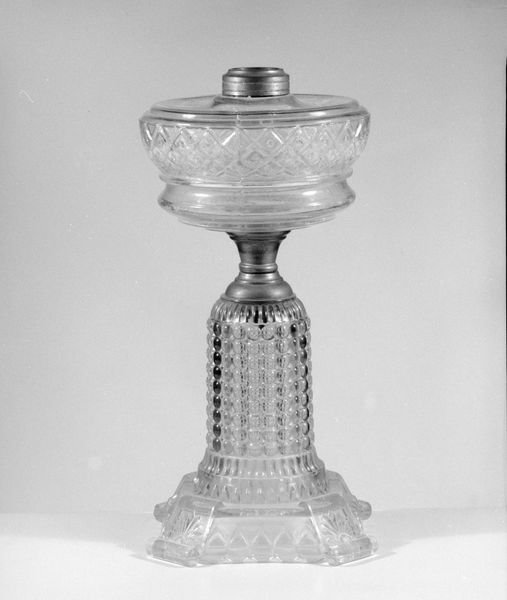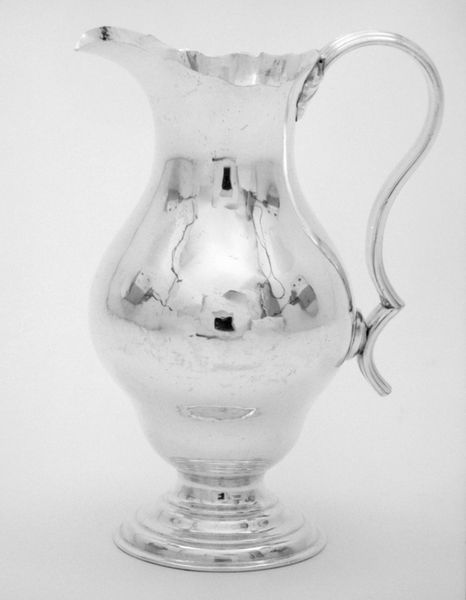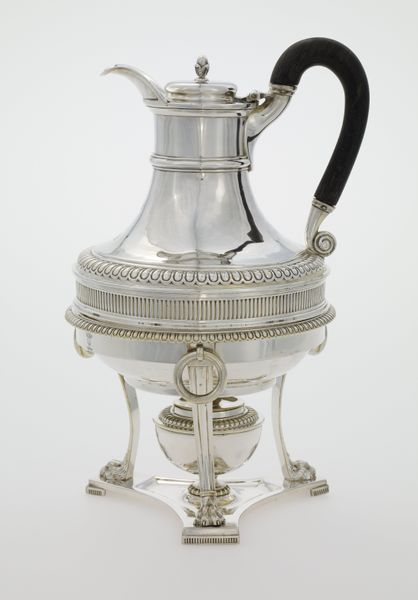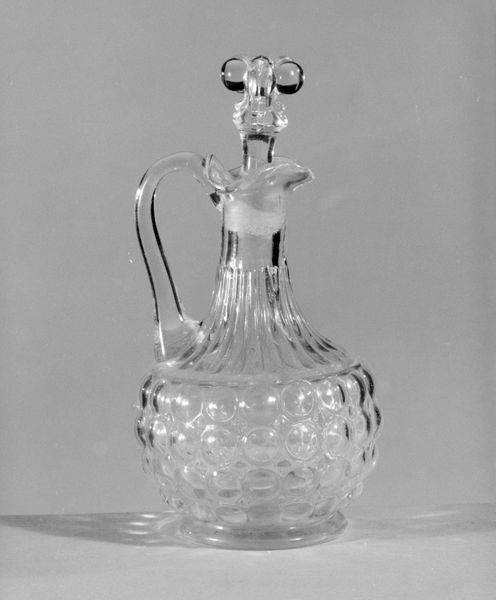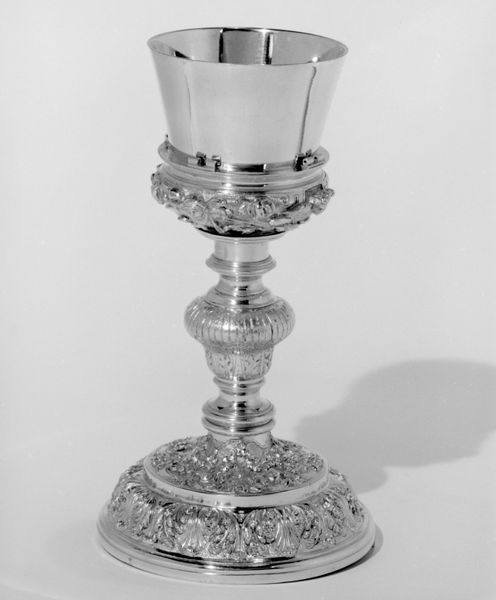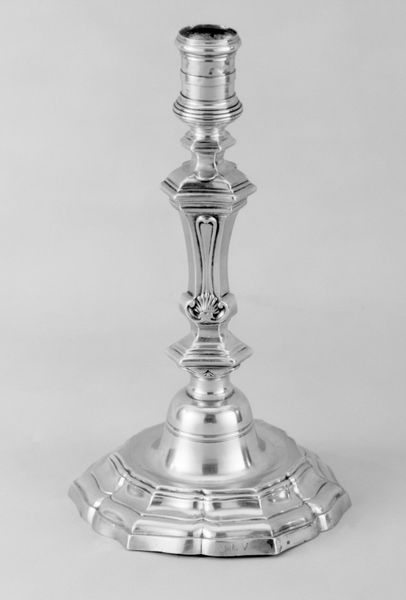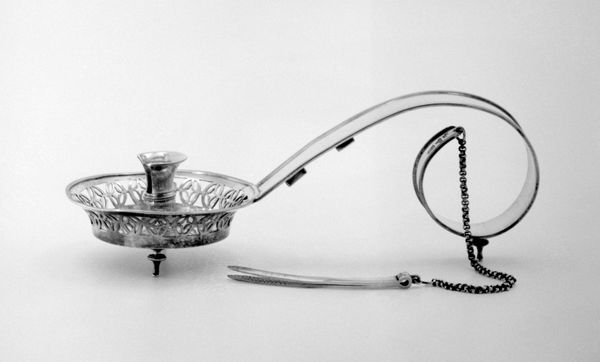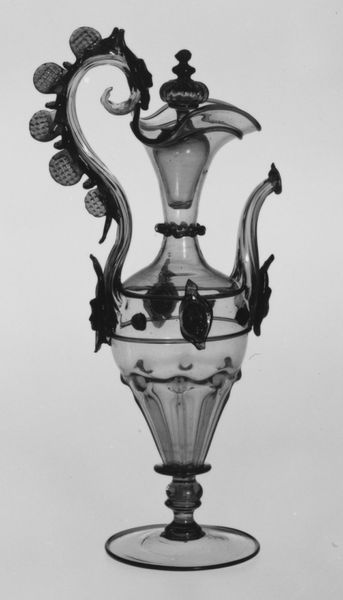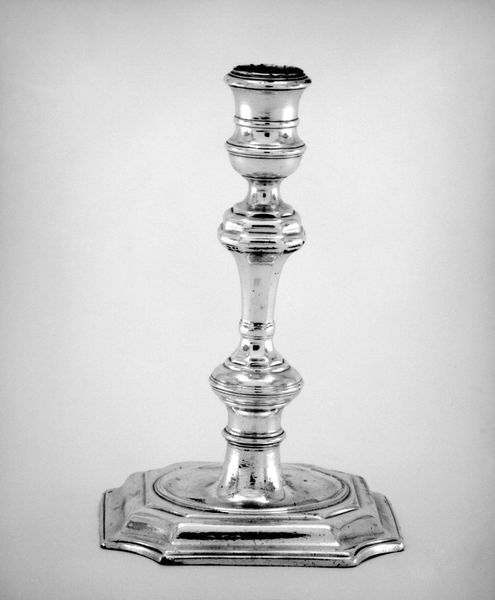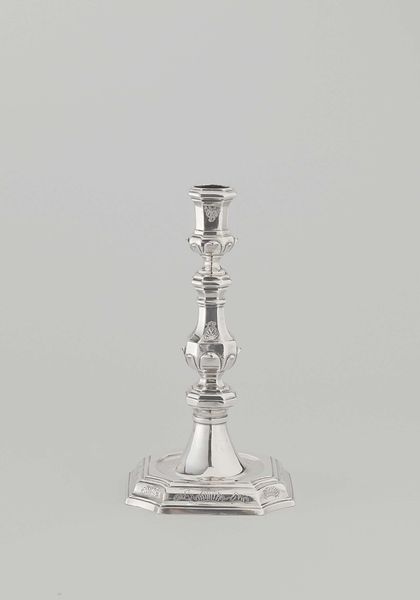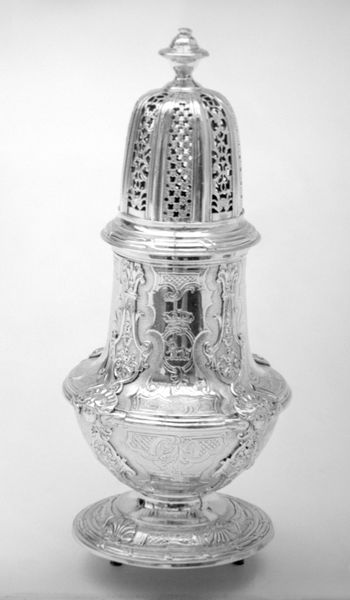
silver, metal, sculpture
#
silver
#
baroque
#
metal
#
sculpture
#
black and white
#
decorative-art
Dimensions: Height (each): 8 in. (20.3 cm)
Copyright: Public Domain
Curator: Here we have a piece entitled "Snuffers and Stand," crafted in the early 1700s by John Laughton II. It's an exquisite example of Baroque silverwork. Editor: Immediately striking. It’s gleaming, austere. A purely functional object rendered with immense sculptural attention and an air of refinement. Curator: Indeed. Consider the social rituals surrounding tobacco use in that era. This wasn't merely about snuffing candles, but performing and signaling status. Owning such a set—made of solid silver, mind you—broadcasted affluence and control. The simple existence of "snuffers" as a household object reflects how deeply entrenched and ritualized tobacco use had become in certain social echelons. Editor: Let's focus on form. Observe how Laughton divides the piece into distinct tiers: a broad, octagonal base providing stability, transitioning to a slender stem ornamented with repetitive ribbed designs. Note the play of concave and convex surfaces culminating in the cylindrical cup where the snuffers rest. Each element interacts visually to direct the viewer’s eye upward. Curator: It also subtly speaks to issues of gender and class, no? Smoking wasn't simply about personal pleasure; it became entangled with trade routes, colonization, and deeply entrenched social inequalities, as labor exploitation fueled tobacco availability to wealthier social strata in European and American countries. Objects like this stand silently as witness to a highly complex colonial history. Editor: You're not wrong, of course, but its strength also comes from its clean lines. The serpentine handle emerging with such grace from the container’s side displays a masterful application of line and balance; a beautiful exercise of functional geometry. Curator: And for me, its historical weight continues to fascinate. What does it mean when an everyday item can signify the vast differences between human experiences? Editor: Ultimately, though, this little piece allows a dialogue to emerge between craftsmanship, necessity, and a distinct cultural context.
Comments
No comments
Be the first to comment and join the conversation on the ultimate creative platform.


